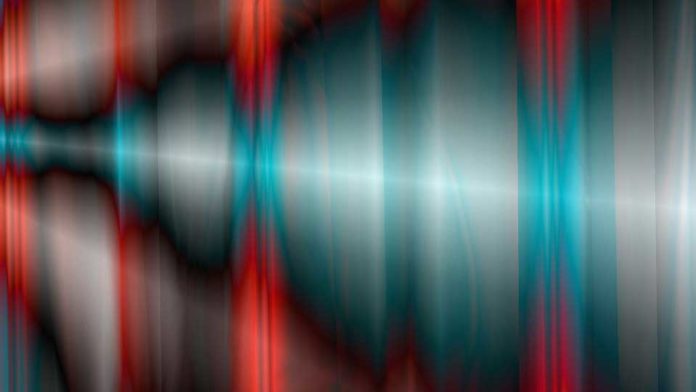A team led by Gabriel Blaj, a staff scientist at the SLAC National Accelerator Laboratory and Stanford University, has produced a record-shattering underwater sound with an intensity that eclipses that of a rocket launch. The intensity of the sound was high enough that it could potentially direct the electricity of an entire city.
For their work, scientists used Linac Coherent Light Source (LCLS), SLAC’s X-ray laser, to blast tiny jets of water to create incredible sound pressures above 270 decibels.
They learned that when the X-ray laser hit the jet, it vaporized the water around it and produced a shockwave. As this shockwave traveled through the jet, it created copies of itself, which formed a “shockwave train” that alternated between high and low pressures.
Once the intensity of underwater sound crosses a certain threshold, the water breaks apart into small vapor-filled bubbles that immediately collapse. The pressure created by the shockwaves was just below this breaking point, suggesting it was at the limit of how loud sound can get underwater.
Absolute zero is the coldest temperature that is conceivable because once you’ve pumped all the energy out of an object, the particles are quite moving. There’s no place further down for the temperature to go.
There’s additionally a hypothetical uppermost limit to temperature. You can heat things to an n number of degrees, yet sooner or later, there’s such a great amount of energy in what is currently a superheated plasma that the atoms break down. Including more energy, all that happens is that increasingly subatomic particles are made.
When it comes to sound, there is no pressure wave at zero decibels. But, at the other end, the medium that the sound is traveling through starts to break down, so it can’t get any louder.
The same thing happened during the experiment. When scientists zapped micro-jets of water (between 14 and 30 micrometers in diameter) with an X-ray laser. When the short X-ray pulses hit, the water is vaporized and generates a shockwave.
This shockwave then traveled through the jet and formed copies of itself in a “shockwave train” made of alternating high and low-pressure zones. In other words, a very loud underwater sound.
Scientists found that once the intensity of sound went above a certain threshold, the water broke down and turned into small vapor-filled bubbles that immediately collapsed in a process called cavitation.
Meanwhile, the pressure in X-ray-generated sound waves is just below the break-apart threshold; it’s as loud as an underwater sound can be.
A better understanding of these trains is essential to creating new techniques that ward off damage in miniature samples that are suspended in water jets to allow their atomic-scale structure to be measured.
This could advance research in areas such as biology and materials science, leading to more effective drugs and more efficient materials.
The team was led by Gabriel Blaj, a staff scientist at SLAC and Stanford University, and Claudiu Stan, at Rutgers University Newark. It also included researchers from the Stanford PULSE Institute and the Paul Scherrer Institute in Switzerland.
LCLS is a DOE Office of Science user facility. This work was supported by the Department of Energy’s Office of Science and Chemical Sciences, Geosciences and Biosciences Division.
Journal Reference
- Gabriel Blaj, Mengning Liang, Andrew L. Aquila, Philip R. Willmott, Jason E. Koglin, Raymond G. Sierra, Joseph S. Robinson, Sébastien Boutet, and Claudiu A. Stan. Generation of high-intensity ultrasound through shock propagation in liquid jets. Physical Review Fluids 4, 043401 DOI: 10.1103/PhysRevFluids.4.043401
